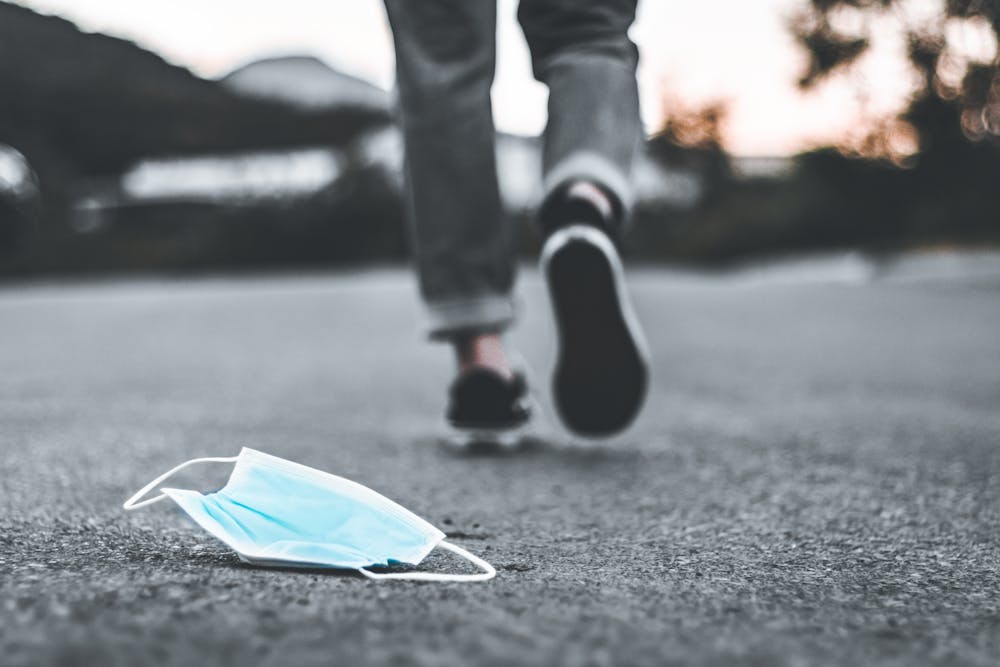
I feel the year 2021 has this “Groundhog Day” quality to me. If you described 2021 to me in 2019, I would be flabbergasted. But after living through 2020, 2021 feels like a mix of unexpected and unwanted repetitiveness. 2021 was another year of climate disasters and political dramas. 2021 was another year of COVID-19 variants that continue to threaten to upend our daily lives. Will 2022 be any different, with Americans even more concerned over the emerging Omicron variant than they were with Delta?
At the time of writing, there’s a lot about Omicron that’s uncertain. The variant has an advantage over others due to its unique protein structure, and an evolutionary biologist has estimated that Omicron can infect three to six times as many people as the Delta variant can in the same time period. Omicron has been detected in twenty-three states as of publication, but local transmission has already begun, and some suspect that the variant was in the United States before we even had a name for it. Governments around the world are taking varying degrees of caution, from shutting down borders to complete lockdowns. Are they overacting or not doing enough? We don’t have enough information to know.
I hate uncertainty, and in this circumstance, you probably do too. Reaching certainty is central to what many of us do as students, whether we’re conducting lab experiments, predicting stock growth, or writing persuasively. When I write, it’s incredibly fulfilling to publish what feels like a bulletproof argument. But I also recognize that shoehorning material for the sake of certainty would be a disservice to readers. I strive to write something that acknowledges problems, but also encourages open discussion about solving them: It’s why my columns are “queries.”
To spite uncertainty, I declared a major in systems engineering at Penn, where predictions and optimization are our bread and butter. My peers and I transform word problems into equations detailing our constraints and goals, and alter decision variables to meet these goals. Uncertainty is chopped up into probability distributions to represent varying outcomes, so that we can at least ascertain measures like expected value and variance.
I strongly believe in the power of the models we work through in class, because though we can’t simplify all of real life into a set of equations, these approximations often work better than nothing. That said, when it comes to a situation like Omicron, even the most powerful people right now only have access to a handful of decision variables, and extremely limited information. How deadly is Omicron compared to other variants? Do existing vaccines work against Omicron? If so, which ones?
Under deep uncertainty, most people aren’t going to jump to Excel and start making graphs — and they probably shouldn’t. We’re getting more and more information by the day, and as Penn students, the best most of us can do is wait and see.
Easier said than done. We’re programmed to fight or flee when we sense danger, and 2021 was chock-full of it. On campus, we saw rising cases in January, and we see them again now. We saw major flooding and heavy wildfire haze. And yet, the best way to protect ourselves from these biological threats and natural disasters has been to stay put.
After the coronavirus hit, I was flooded with the leftover energy that I once used to chant, protest, and canvas. All of that energy had to go somewhere, and in 2021, it went into poor coping mechanisms like doomscrolling. Understanding tragedy in the world made me feel productive in the short term, but even more powerless in the long term.
In tumultuous times, the best we can do is to accept what we can’t control and instead focus on what we can control. The world around us may follow cycles of tragedy, but as a few variables among billions, our immediate actions can’t change this repetition. But we can shift the trajectories of ourselves and those around us into unique, ever-changing paths. With the changing year, I intend to do just that, spending the holiday season cherishing my family and friends, offering compassion (and presents!), and receiving in turn. In the new year, I will take more time to consider: How can I be better to my friends, my family, and myself?
Though we aren’t repeating one day over and over like in "Groundhog Day," it may be best for us to take small steps towards normalcy and follow regulations as they emerge, rather than hyper-focusing on every new COVID-19 story. Even if Omicron does send us backwards, we can now carry the lessons from 2020 and 2021 with us into 2022, emerging more equipped and resilient than we were in March of 2020.
CAROLINE MAGDOLEN is a College and Engineering sophomore studying environmental science and systems engineering from New York City. Her email is magdolen@sas.upenn.edu.
The Daily Pennsylvanian is an independent, student-run newspaper. Please consider making a donation to support the coverage that shapes the University. Your generosity ensures a future of strong journalism at Penn.
Donate







